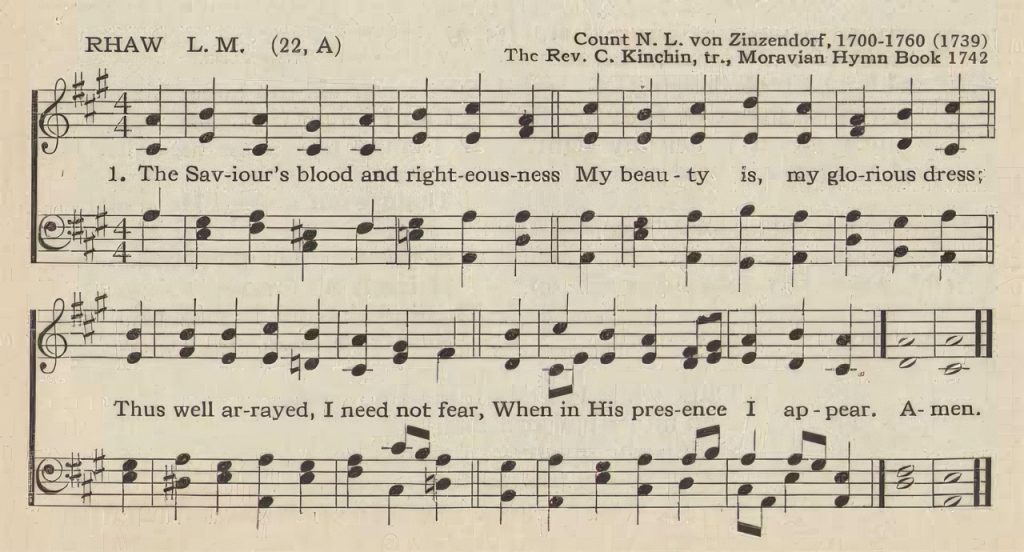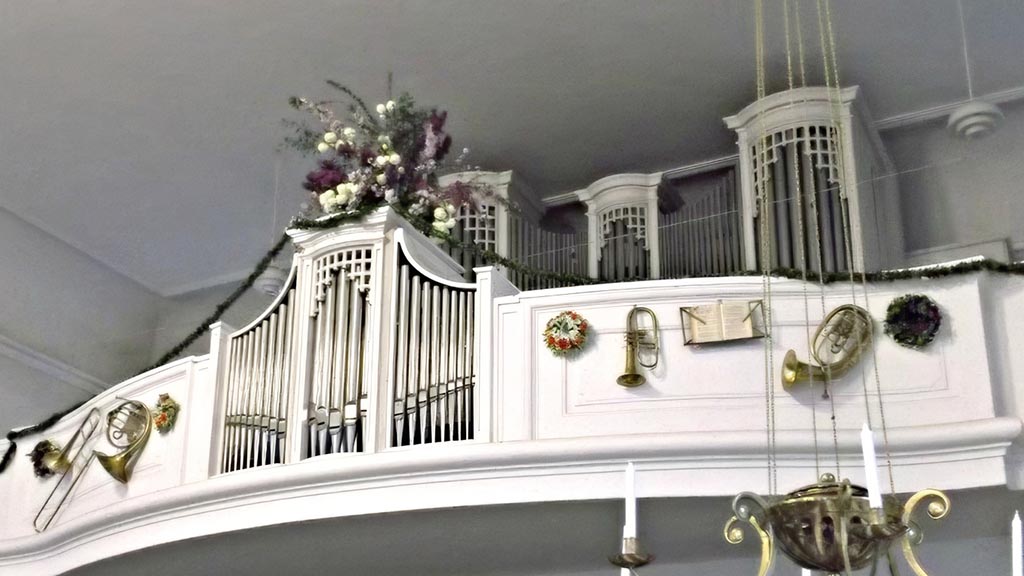When Moravians answer the question “What do Moravians believe?” we turn naturally to the hymnal first. Our hymns are the most frequent and characteristic expression of our beliefs, and that was true in the Ancient Unity as well as in the Renewed Moravian Church. Added to our hymns are the anthems, mostly composed in the eighteenth and early nineteenth centuries, which comprise what we usually mean by “Moravian music.” In recent years we have begun to compose more anthems again. Whether in hymns or anthems, though, our doctrine tends to be sung more than spoken.

This is an idea that would set well with Zinzendorf himself. As Craig Atwood noted in his Ph.D. dissertation, “Zinzendorf insisted that the truest language for heart religion is song…. For Zinzendorf and the Brüdergemeine… the truths of the Christian religion are best communicated in poetry and song, not in systematic theology and polemics.”1 We should recall that the Moravian Church was reborn in a worship service (remember August 13th?), and that its most characteristic worship service became the Singstunde. This is a service consisting almost completely of hymns, in which stanzas from various hymns are woven together to develop a particular theme of the day or event. No sermon was needed, for the Singstunde itself was a “sermon in song.” Over the years, the Singstunde and the related Liturgical Hymns developed into the liturgies we use today, but lately we in America are beginning to appreciate the pure Singstunde form again, a gift which the Continental Province never forgot. Note too that a lovefeast service is actually a Singstunde with a simple meal included, and that our Moravian form of Holy Communion is really a Singstunde including the Sacrament.

Zinzendorf produced a huge number of hymn stanzas for the many Singstunden in which he and the congregations participated, often composing these stanzas “off the top of his head.” Many of these were not preserved, but several thousand of his hymn stanzas have survived. In many of these Zinzendorf produced works which form a worthy part of the continuing worship of the congregations, and after all, worship is at the core of the congregations’ life. We often find here Zinzendorf at his best, for he has a way of coming up with a text that employs and touches both the head and the heart. That is, he deals with theological concepts which call for the employment of reason, as his Lutheran background would lead one to expect, while at the same time joining this with that very Moravian “heart religion,” which simply rejoices in the near presence of the Savior who gave Himself for us and the changed living that this brings: a best of both worlds.
It is in the production of hymns and religious texts for worship, and the music to accompany them, that the influence of Zinzendorf continues most vitally in the Moravian Church today. From the eighteenth century to the present, Moravians have produced an amazing repertoire of hymns and sacred vocal works which give vivid expression to the faith we believe. And so, the next time someone says to you, “Moravians don’t really have much theology,” just say to them: “Go read a Moravian hymn” — and Jesus and Zinzendorf will smile down from above, no doubt humming a favorite tune.
Dr. C. Daniel Crews, Retired Archivist, Southern Province
Dr. Nola Reed Knouse, Retired Director, Moravian Music Foundation
Featured image is the recently renovated pipe organ in the Brudergemein church in Herrnhut, Germany.
1 Craig Atwood, Blood, Sex, and Death: Life and Liturgy in Zinzendorf’s Bethlehem, Ph.D. dissertation, Princeton Theological Seminary, 1995, p. 136f.
Originally Published on December 30th, 2002

